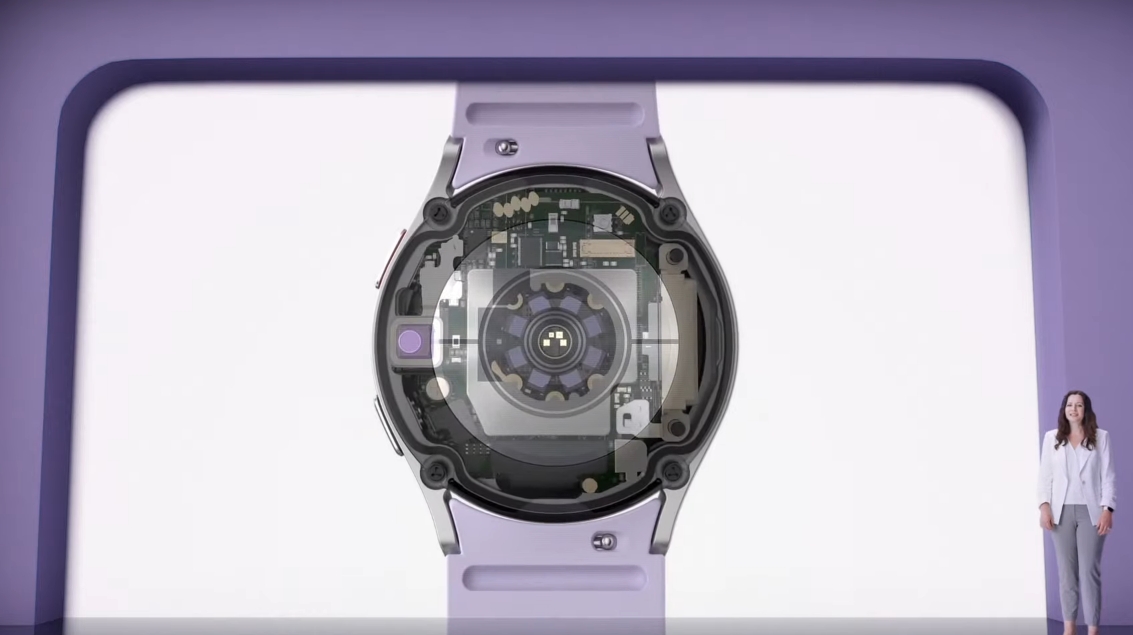What is the hot new sensor on the Samsung Galaxy Watch 5 and why can't you use it?
Hope the sensor wakes up soon

Samsung put a lot of emphasis on improved sleep tracking with its new Galaxy Watch 5. There's even a new infrared temperature sensor on the phone that will read your skin temperature, and that could provide useful data for building a better sleep-tracking model. That is, it could be when we can finally use the sensor.
Unfortunately, implementation of the new sensor has been delayed in the U.S. and it is not currently active on the new devices. This is occasionally what befalls new health-based features and the promises these features make.
Samsung has not offered any explanation for why the feature was included in the new device and mentioned at the launch, but not active for buyers at this time. The company only said the feature would be available "in the near future," and went on to explain to our friends at Tom's Guide how the sensor will help with sleep monitoring.
Why temperature for sleep?
Traditionally, wearables have employed a variety of sensors to track your sleep, adding up the data at the end and using some intelligent analysis to determine when you're asleep. Smartwatches use motion sensors, heart rate monitors, and even microphones to listen to sleep patterns.
On their own, none of these is perfect, but as sensors improve, and as manufacturers add new sensors for more data points, the watches and wearables get better at determining when we are asleep. Still, only a comprehensive polysomnography test – one that measures brain, circulation, and lung functions – can truly tell us how we are sleeping.
The temperature sensor on the Galaxy Watch 5 will help the watch give you advice on how to sleep better. Our bodies naturally cool at night, so a temperature sensor will be able to tell you if your environment is cool or hot enough to impact your sleep.
Fitbit has been using detailed temperature tracking on devices like the Fitbit Versa, and even its simpler devices offer a snapshot of your average temperature after you've slept. On its site, Fitbit explains temperature sensing, and Lindsey Sunden, Director of Physiological Sensing at Fitbit, says “If you see peaks in your skin temperature during the night, it could be a sign that overheating is disrupting your sleep.”
Sign up for breaking news, reviews, opinion, top tech deals, and more.
Samsung says users need to wear the watch to sleep for seven days and then complete a survey about their sleep habits. By tracking your skin temperature over that week, Samsung Health builds a profile of your baseline temperature while you sleep. Then, Samsung can make suggestions to improve your sleep.
Who else is taking your temperature?
There are other useful applications for a skin temperature sensor on a wearable, and Samsung says it will be open to third-party developers. Temperature monitoring could help with recovery after exercise, or even detect the onset of an illness. The latter feature, of course, could be a sticking point with government health regulators.
Apple has yet to include temperature sensing on an Apple Watch. We have seen temperature sensors on a number of wearables on the market, most notably from Fitbit and Huawei. The Oura Ring also tracks temperature with other sleep data.
We are working with the new Samsung watches for our official review, but you can take a deeper look at our explainer page for the Galaxy Watch 5 and the Galaxy Watch 5 Pro to see what makes these new smartwatches tick.
If you want to catch up on everything Samsung unveiled at Unpacked, check out our comprehensive coverage.

Starting more than 20 years ago at eTown.com. Philip Berne has written for Engadget, The Verge, PC Mag, Digital Trends, Slashgear, TechRadar, AndroidCentral, and was Editor-in-Chief of the sadly-defunct infoSync. Phil holds an entirely useful M.A. in Cultural Theory from Carnegie Mellon University. He sang in numerous college a cappella groups.
Phil did a stint at Samsung Mobile, leading reviews for the PR team and writing crisis communications until he left in 2017. He worked at an Apple Store near Boston, MA, at the height of iPod popularity. Phil is certified in Google AI Essentials. His passion is the democratizing power of mobile technology. Before AI came along he was totally sure the next big thing would be something we wear on our faces.